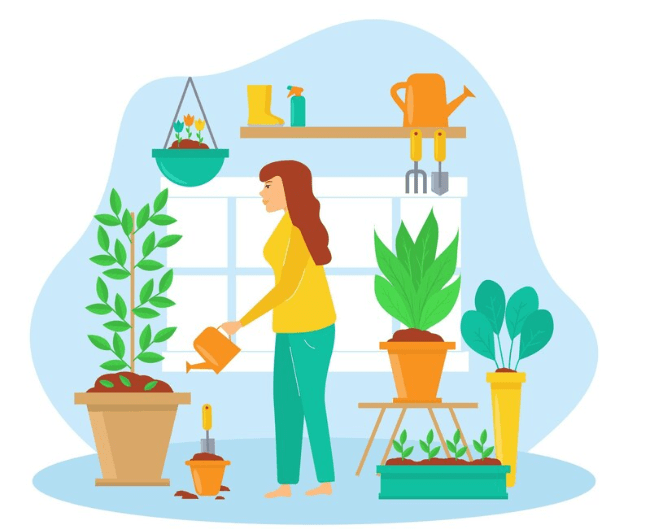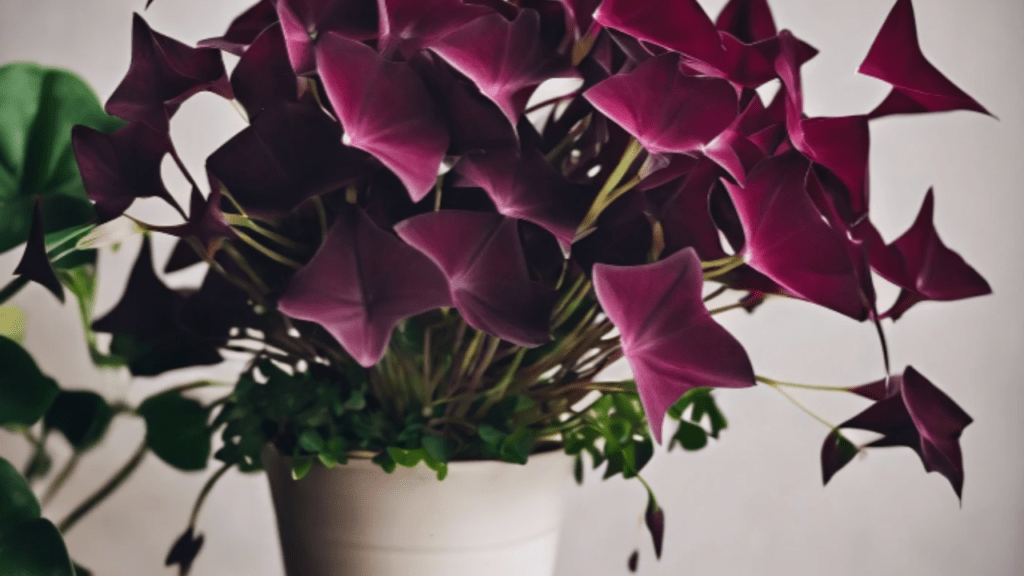
Butterfly Plant Indoor: How to Care for Butterfly Plants Inside
Bringing nature indoors can significantly enhance the beauty and ambiance of your home. Among the many plants you can choose, butterfly plants stand out for their vibrant blooms and ability to attract butterflies. Growing butterfly plant indoor not only adds aesthetic value but also provides numerous benefits such as improved air quality and a calming environment. This comprehensive guide will cover everything you need to know about growing and caring for butterfly plants indoors, ensuring your indoor garden thrives.
Butterfly plants are a beautiful addition to any indoor space, with their vibrant colors and ability to attract butterflies. Indoor butterfly plants can bring a touch of nature and beauty to your home, creating a calming and serene environment. When caring for butterfly plants indoors, it’s important to provide the right conditions for them to thrive. This includes providing ample sunlight, regular watering, and proper soil drainage. It’s also important to keep an eye out for any pests or diseases that may affect the plants. By following these care tips, you can ensure that your indoor butterfly plants continue to bloom and attract butterflies, adding a touch of natural beauty to your home.
Table of Contents
ToggleUnderstanding Butterfly Plants
Butterfly plants are a wonderful addition to any indoor space, as they are not only beautiful but also attract butterflies, adding a touch of nature to your home. When caring for butterfly plants indoors, it’s important to provide the right conditions for them to thrive. This includes giving them ample sunlight, regular watering, and ensuring proper soil drainage. Additionally, it’s essential to keep an eye out for any pests or diseases that may affect the plants and take action to address them promptly. By following these care tips, you can ensure that your indoor butterfly plants continue to bloom and attract butterflies, creating a serene and calming environment in your home.
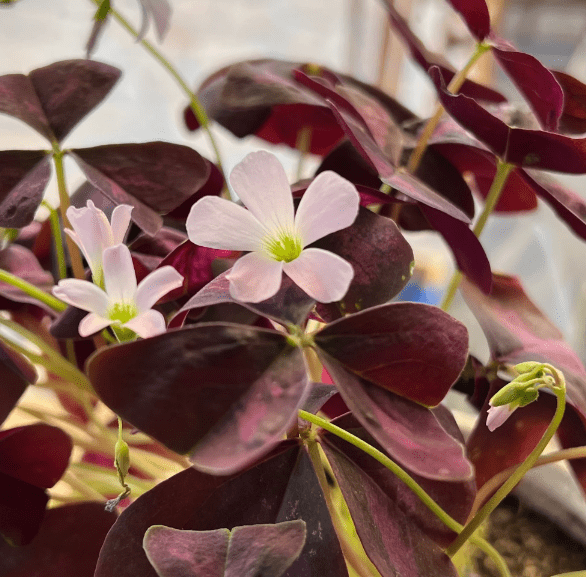
What are butterfly plants?
Butterfly plants are a type of plant that is known for attracting butterflies due to their vibrant colors and nectar-rich flowers. These plants provide a food source for butterflies and can help support the local butterfly population. Butterfly plants come in a variety of species, including milkweed, butterfly bush, coneflower, and black-eyed Susan, among others. These plants can be grown both indoors and outdoors, but when grown indoors, they add a beautiful touch of nature to your home. Indoor butterfly plants require proper care, including regular watering, adequate sunlight, and well-draining soil to thrive. By providing the right conditions, you can create a welcoming environment for butterflies and enjoy the beauty of these plants in your home.
Popular varieties of butterfly plants suitable for indoor growing.
There are several popular varieties of butterfly plants that are suitable for indoor growing. Milkweed is a popular choice, as it is the primary food source for monarch butterflies and has colorful flowers that attract them. Butterfly bush is another popular choice, with its vibrant and fragrant blooms that butterflies love. Coneflowers and black-eyed Susans are also great options, as they are easy to care for and produce nectar-rich flowers that butterflies are drawn to. When choosing butterfly plants for indoor growing, it’s important to consider the available space, sunlight, and watering requirements to ensure the plants thrive. With the right care, these indoor butterfly plants can continue to bloom and attract butterflies, adding a touch of natural beauty to your home.
Benefits of having butterfly plants indoors.
Having butterfly plants indoors has many benefits. First, it adds natural beauty to your home and creates a calming and peaceful environment. The vibrant and colorful blooms of butterfly plants can brighten up any room and bring a touch of nature indoors. Additionally, having butterfly plants indoors can attract butterflies, providing a unique and delightful experience as you observe the beautiful insects fluttering around your home.
Moreover, indoor butterfly plants can serve as a learning opportunity for children and adults alike. Watching the life cycle of butterflies, from caterpillars to chrysalises to fully grown butterflies, can be a fascinating and educational experience. It can teach about the importance of pollinators and the interconnectedness of nature.
Furthermore, caring for butterfly plants indoors can be a rewarding and fulfilling hobby. It can encourage mindfulness and the practice of nurturing and tending to living things. It also provides a sense of accomplishment as you witness the growth and blossoming of the plants.
Overall, having butterfly plants indoors can bring joy, beauty, and a deeper connection to nature into your home. With the proper care and attention, these plants can thrive and continue to provide these benefits for years to come.
Choosing the Right Butterfly Plant for Indoors
When choosing the right butterfly plant for indoors, it’s important to consider a few key factors. First, consider the space in your home and the amount of natural light it receives. Some butterfly plants thrive in bright, indirect light, while others prefer low light conditions. Additionally, consider the size of the plant and how much space it will need to grow. Some butterfly plants can be quite large and may require ample room to spread out.
Next, think about the maintenance and care requirements of the plant. Some butterfly plants are more finicky and require specific humidity levels and watering schedules, while others are more low-maintenance. Consider your ability and commitment to caring for the plant before making your selection.
Finally, consider the specific species of butterfly plant and its unique characteristics. Some plants may have colorful blooms that attract butterflies, while others may have unique foliage that adds visual interest to your indoor space. Research different species to find one that aligns with your preferences and fits well within your home environment.
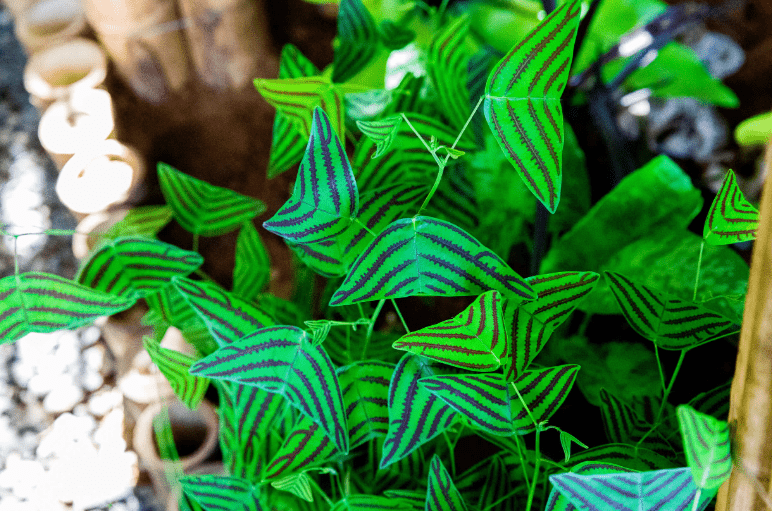
Factors to consider when selecting a butterfly plant for indoor growth.
When selecting a butterfly plant for indoor growth, there are several factors to consider. First, consider the space you have available for the plant. Some butterfly plants can grow quite large, so make sure you have enough room for the plant to thrive. Next, consider the amount of light the plant will receive in your indoor space. Some butterfly plants require a lot of sunlight, while others can thrive in lower light conditions. Additionally, consider the temperature and humidity levels in your home. Some butterfly plants require specific temperature and humidity levels to thrive, so make sure your indoor environment can accommodate these needs. Lastly, consider the maintenance and care required for the plant. Some butterfly plants may require more attention and care than others, so choose a plant that fits your lifestyle and schedule. By considering these factors, you can select the right butterfly plant for indoor growth that will thrive and bring beauty and joy into your home.
Recommended butterfly plant varieties for indoor environments.
When choosing butterfly plant varieties for indoor environments, there are a few factors to consider. Some popular options for indoor butterfly plants include the African Violet, Peace Lily, and Orchids. These plants are relatively low-maintenance and can thrive in indoor environments. Another great option is the Buddleia, also known as the butterfly bush, which can be grown in a container indoors and is known for attracting butterflies. The Pentas plant is also a good choice, as it attracts both butterflies and hummingbirds and can thrive indoors with the right care. When selecting a butterfly plant for indoor growth, it’s important to consider the space available, light conditions, temperature, humidity, and maintenance requirements to ensure the plant can thrive and bring beauty into your home.
Where to buy butterfly plants and seeds: nurseries, online stores, and garden centers.
If you’re looking to buy butterfly plants and seeds, there are a few options to consider. Nurseries and garden centers are great places to find a variety of butterfly plants and seeds. You can also find a wide selection of options at online stores, where you can compare prices and read product reviews. When shopping for butterfly plants and seeds, consider the specific needs of the plants and choose varieties that will thrive in your local climate. Make sure to also consider the space and conditions in your home or garden where you plan to grow the plants. With the right care and attention, you can create a beautiful environment for butterflies to thrive.
Preparing Your Indoor Space

Ideal location for indoor butterfly plants: light, temperature, and humidity requirements.
When choosing an ideal location for indoor butterfly plants, it’s important to consider their light, temperature, and humidity requirements. Most butterfly plants require plenty of sunlight, so it’s best to place them in a location where they can receive at least six hours of sunlight each day. South-facing windows are often a good choice for indoor butterfly plants, as they receive the most sunlight. Additionally, it’s important to ensure that the temperature and humidity levels are suitable for the specific needs of the plants. Some butterfly plants prefer warmer temperatures, while others thrive in cooler conditions. It’s also important to ensure that the indoor environment has adequate humidity, as many butterfly plants require higher humidity levels to thrive. By carefully considering the light, temperature, and humidity requirements of indoor butterfly plants, you can create an ideal environment for them to grow and flourish.
Preparing the soil: best soil mix for butterfly plants.
When it comes to preparing the soil for butterfly plants, it’s important to use a well-draining soil mix. This will help prevent water from pooling and potentially causing root rot. A good soil mix for butterfly plants is one that is rich in organic matter and provides good aeration for the roots. You can create your own soil mix by combining equal parts of potting soil, perlite, and compost. This will provide a nutrient-rich environment for your butterfly plants to thrive. It’s also a good idea to add a slow-release fertilizer to the soil mix to provide additional nutrients for the plants. By preparing the soil with the right mix, you can create an ideal growing environment for your butterfly plants.
Selecting the right containers and pots.
When it comes to growing indoor butterfly plants, selecting the right containers and pots is crucial. You’ll want to choose containers that have good drainage to prevent water from pooling and causing root rot. Look for pots with drainage holes at the bottom, or consider using a pot with a tray to catch excess water. The size of the pot is also important – you’ll want to choose a pot that is large enough to allow the roots to spread out and grow, but not too large that it holds too much excess water. Additionally, consider the material of the pot – plastic pots are lightweight and retain moisture well, while clay pots are porous and allow for good air circulation to the roots. By selecting the right containers and pots for your indoor butterfly plants, you can create the perfect growing environment for them to thrive.
Planting Butterfly Plants Indoors
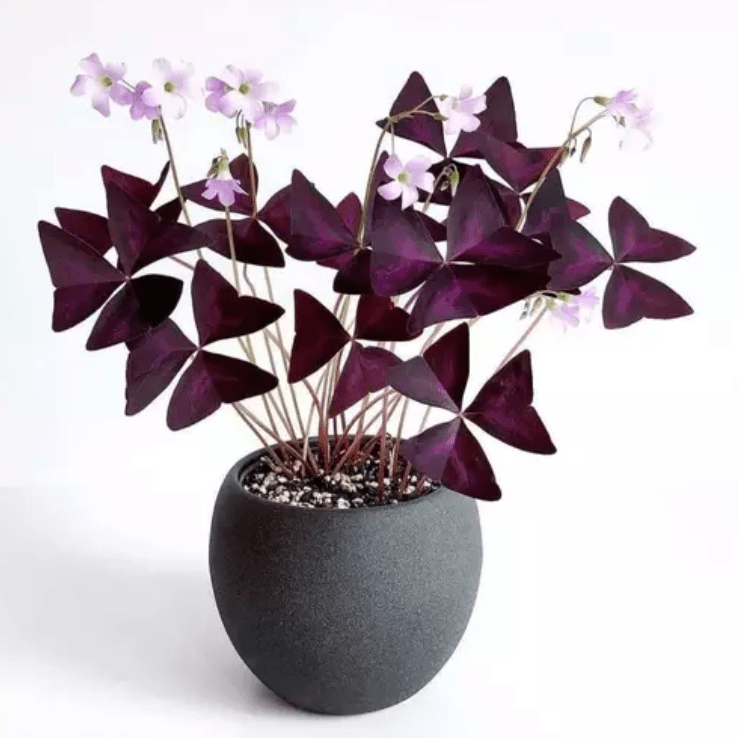
Seed preparation and germination.
When it comes to planting butterfly plants indoors, there are a few important steps to consider. First, it’s important to prepare the soil with the right mix and nutrients to create an ideal growing environment for your plants. Adding a slow-release fertilizer to the soil mix can provide additional nutrients for the plants. Additionally, selecting the right containers and pots is crucial. Look for containers with good drainage and the right size to allow the roots to spread out and grow. Consider the material of the pot as well, as it can impact moisture retention and air circulation.
When it comes to seed preparation and germination, it’s important to follow the specific instructions for the type of butterfly plant you are growing. Some seeds may require scarification or stratification to help with germination, while others may benefit from soaking in water before planting. By properly preparing and germinating the seeds, you can set the stage for successful growth and development of your indoor butterfly plants.
Transplanting young plants.
When transplanting young plants, it’s important to provide them with the right conditions for healthy growth. Adding a slow-release fertilizer to the soil mix can provide additional nutrients for the plants as they establish themselves in their new environment. Selecting the right containers and pots is crucial as well. Look for containers with good drainage and the right size to allow the roots to spread out and grow. Consider the material of the pot as well, as it can impact moisture retention and air circulation. When it comes to seed preparation and germination, it’s important to follow the specific instructions for the type of butterfly plant you are growing. Some seeds may require scarification or stratification to help with germination, while others may benefit from soaking in water before planting. By properly preparing and germinating the seeds, you can set the stage for successful growth and development of your indoor butterfly plants.
Proper planting techniques and spacing.
Proper planting techniques and spacing are essential for the successful growth of your plants. When transplanting young plants, it’s important to provide them with the right conditions for healthy growth. Adding a slow-release fertilizer to the soil mix can provide additional nutrients for the plants as they establish themselves in their new environment. Selecting the right containers and pots is crucial as well. Look for containers with good drainage and the right size to allow the roots to spread out and grow. Consider the material of the pot as well, as it can impact moisture retention and air circulation. Proper spacing between plants is also important to ensure that they have enough room to grow and receive adequate sunlight and water. When it comes to seed preparation and germination, it’s important to follow the specific instructions for the type of plant you are growing. Some seeds may require scarification or stratification to help with germination, while others may benefit from soaking in water before planting. By properly preparing and germinating the seeds, you can set the stage for successful growth and development of your plants. With the right planting techniques and spacing, you can create an environment that promotes healthy and thriving plants.
Watering and Feeding Your Butterfly Plants
Watering requirements: how much and how often to water indoor butterfly plants.
When it comes to watering indoor butterfly plants, it’s important to find the right balance. Overwatering can lead to root rot, while underwatering can cause the plants to dry out. It’s best to water the plants when the top inch of soil feels dry to the touch. This can vary depending on factors such as the type of plant, the size of the pot, and the humidity levels in your home. Generally, it’s best to water your indoor butterfly plants once a week, but be sure to adjust based on the specific needs of your plants. It’s also important to use room temperature or tepid water, as cold water can shock the roots of the plants. When it comes to feeding your plants, you can use a balanced, water-soluble fertilizer once a month during the growing season. Be sure to follow the instructions on the fertilizer package for the correct dilution and application method. With proper watering and feeding, your indoor butterfly plants can thrive and bring beauty to your home.
Feeding your plants: types of fertilizers and feeding schedules.
When it comes to feeding your plants, it’s important to choose the right type of fertilizer and follow a feeding schedule. There are different types of fertilizers, including organic and synthetic options. Organic fertilizers are made from natural materials and provide a slow release of nutrients, while synthetic fertilizers are made from chemical compounds and provide a quick release of nutrients. You can choose the type of fertilizer based on your personal preference and the needs of your plants.
In terms of feeding schedules, it’s important to follow the instructions on the fertilizer package for the correct dilution and application method. Generally, it’s best to use a balanced, water-soluble fertilizer once a month during the growing season. However, specific plants may have different feeding needs, so be sure to research the specific requirements for your plants.
It’s also important to be mindful of overfeeding, as this can lead to nutrient build-up in the soil and potentially harm your plants. Always follow the recommended dosage and frequency for fertilizing your plants.
By choosing the right type of fertilizer and following a feeding schedule, you can ensure that your plants receive the nutrients they need to thrive and grow beautifully.
Organic vs. synthetic fertilizers: pros and cons.
When it comes to organic vs. synthetic fertilizers, there are pros and cons to consider for each. Organic fertilizers are natural and promote soil health, as they contain beneficial microorganisms and nutrients. They also improve soil structure and water retention. However, they can take longer to break down and release nutrients, and may have lower nutrient content compared to synthetic fertilizers. On the other hand, synthetic fertilizers are fast-acting and have higher nutrient content, providing quick results. However, they can also harm beneficial microorganisms in the soil and leach into water sources, causing pollution. Ultimately, the choice between organic and synthetic fertilizers depends on your gardening goals and personal beliefs. It’s important to consider the environmental impact, plant nutrition, and soil health when deciding which type of fertilizer to use. Whichever type you choose, be sure to follow the instructions on the package and use it responsibly to support the growth of your plants.
Providing Adequate Light
is crucial for the health and growth of your plants. Different plants have different light requirements, so it’s important to do your research and understand the needs of your specific plants. Indoor plants, for example, may need to be placed near a window where they can receive natural sunlight, while outdoor plants may need to be positioned in a spot that gets the right amount of sunlight throughout the day.
If you find that your plants are not getting enough light, you can consider using artificial grow lights to supplement their light intake. These lights can provide the right spectrum of light for your plants and can help them thrive, especially in areas where natural sunlight is limited.
Remember to regularly check your plants for any signs of light deficiency, such as yellowing leaves or stunted growth. Adjust their light exposure as needed to ensure they have the best chance of growing healthy and strong. By providing adequate light, you’ll be setting your plants up for success and promoting a thriving, green environment in your home or garden.
Pruning and Maintaining Butterfly Plants
is an important step in ensuring their health and vitality. Regular pruning helps to encourage new growth, maintain the shape and size of the plants, and remove any dead or diseased parts. It also promotes better air circulation and sunlight exposure, which are essential for the overall well-being of the plants.
When pruning butterfly plants, it’s important to use sharp, clean tools to make precise cuts. Remove any dead or damaged branches, as well as any overgrown or crowded areas. You can also prune to shape the plant and encourage new growth. Be sure to research the specific pruning needs of your butterfly plants, as different species may have different requirements.
In addition to pruning, maintaining butterfly plants also involves regular watering, fertilizing, and pest control. Be sure to water your plants consistently, especially during dry periods, and avoid overwatering to prevent root rot. Fertilize your plants according to their specific needs, and keep an eye out for any signs of pests or diseases. Address any issues promptly to keep your butterfly plants healthy and thriving.
Overall, proper pruning and maintenance are essential for the long-term health and beauty of butterfly plants. By investing time and effort into caring for your plants, you can enjoy their vibrant colors and attract beautiful butterflies to your garden.
Common Problems and Solutions
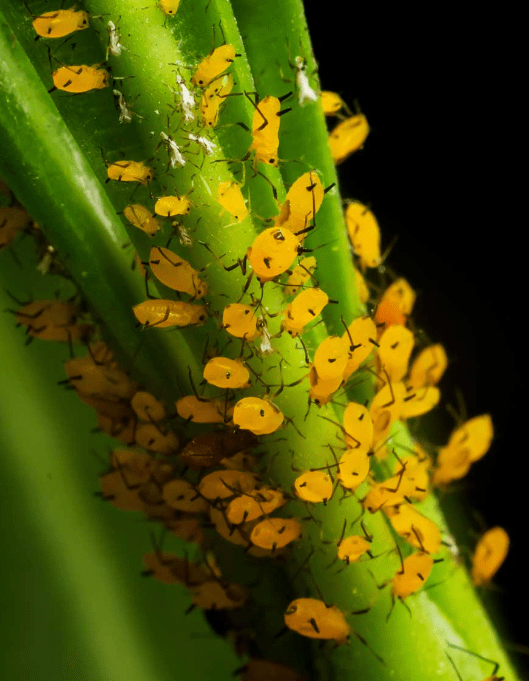
When it comes to maintaining butterfly plants, it’s important to be aware of the common problems that may arise and the solutions to address them. One common issue is pruning, as different species of butterfly plants may have different pruning needs. Researching the specific requirements of your plants is essential for proper care. Additionally, regular watering, fertilizing, and pest control are important aspects of maintaining butterfly plants. Consistent watering is crucial, especially during dry periods, but overwatering should be avoided to prevent root rot. Fertilizing your plants according to their specific needs and keeping an eye out for pests or diseases are also important. Addressing any issues promptly is key to keeping your butterfly plants healthy and thriving. Overall, proper pruning and maintenance are essential for the long-term health and beauty of butterfly plants. By investing time and effort into caring for your plants, you can enjoy their vibrant colors and attract beautiful butterflies to your garden.
Benefits of Indoor Butterfly Plants
Indoor butterfly plants not only add beauty to your home but also provide a welcoming environment for butterflies. These plants serve as a food source and habitat for butterflies, creating a natural and peaceful atmosphere in your indoor space. Additionally, indoor butterfly plants can help improve air quality by reducing toxins and providing oxygen. They also have the potential to reduce stress and promote overall well-being. Taking care of indoor butterfly plants can also be a satisfying and rewarding hobby, as you watch these plants thrive and attract beautiful butterflies. Overall, incorporating indoor butterfly plants into your home can enhance the aesthetic appeal and create a tranquil atmosphere while benefiting the ecosystem.
In conclusion, caring for butterfly plants indoors requires attention to their specific needs, such as providing adequate sunlight, proper watering, and well-draining soil. By following the tips and guidelines provided in this post, you can create a thriving indoor environment for your butterfly plants and enjoy the benefits of having them in your home. Remember to monitor their growth and make adjustments as needed to ensure they continue to flourish.
Frequently asked questions And Answer
Butterfly plants need bright, indirect light when kept indoors. Place them near a south or west-facing window for the best light exposure.
It’s important to keep the soil of your butterfly plant evenly moist, but not waterlogged. Water when the top inch of soil feels dry to the touch, usually every 1-2 weeks.
Yes, you can fertilize your butterfly plant with a balanced, water-soluble fertilizer every 4-6 weeks during the growing season (spring and summer).
It’s best to repot your butterfly plant into a larger container if it becomes root-bound. Choose a pot that is 1-2 inches larger in diameter than the current one to allow for proper growth.
While butterfly plants are known for attracting butterflies in outdoor gardens, they may not have the same effect indoors. However, they still make beautiful and easy-to-care-for houseplants.
Keep an eye out for common houseplant pests such as aphids or spider mites. You can use insecticidal soap or neem oil to treat any infestations.
Yes, you can prune your butterfly plant to maintain its shape and encourage new growth. Use clean, sharp scissors to trim any leggy or overgrown stems.
Butterfly plants prefer temperatures between 65-75°F (18-24°C) indoors. Avoid placing them near drafts or heating vents to prevent temperature fluctuations.

